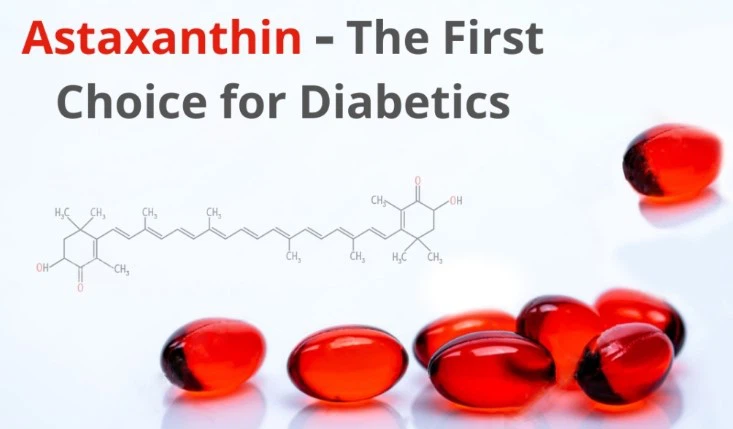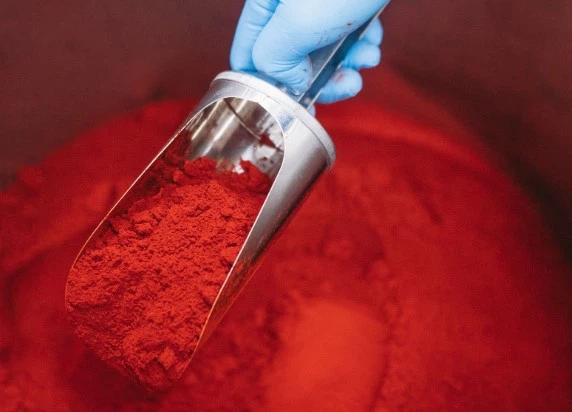No, Astaxanthin is not typically considered a blood thinner.
Introduction
Astaxanthin, a potent antioxidant carotenoid known for its vibrant reddish hue, has garnered significant attention as a supplement due to its potential health benefits.
Gotten essentially from the microalgae Haematococcus pluvialis, astaxanthin is praised for its cancer prevention agent properties and is presently broadly accessible in different structures, including powders and enhancements.
Given the growing interest in cardiovascular health, many wonder, "Is astaxanthin a blood thinner?"
Contact us for free samples of astaxanthin powder at medical@ysgcn.com.
This article aims to answer this question by exploring scientific findings, examining its potential blood-thinning effects, and providing practical recommendations.
Does Astaxanthin Act as a Blood Thinner?
Currently, there is no direct evidence suggesting that astaxanthin acts as a conventional blood thinner like warfarin or aspirin.
Its cardiovascular benefits may stem more from its antioxidant and anti-inflammatory effects rather than anticoagulant properties.

Table of Contents
Key Takeaways
What is Astaxanthin?
Blood Thinning: The Basics
The Science Behind Astaxanthin
Potential Blood-Thinning Effects of Astaxanthin
Part 2: Exploring the Safety and Efficacy of Astaxanthin
FAQs about Astaxanthin and Blood Thinning
Safety Considerations
Efficacy of Astaxanthin as a Blood Thinner
Practical Considerations and Recommendations
Conclusion
References
Key Takeaways
Astaxanthin bulk powder is a powerful antioxidant carotenoid primarily sourced from microalgae.
Its antioxidant properties are linked to various health benefits, including cardiovascular health.
Blood thinning involves reducing blood clot formation to prevent conditions like strokes and heart attacks.
Scientific studies on astaxanthin's blood-thinning effects are limited and inconclusive.
Safety considerations suggest consulting healthcare professionals before starting astaxanthin supplementation.
What is Astaxanthin?
Astaxanthin is a naturally occurring carotenoid found in various marine organisms, including salmon, krill, and shrimp.
However, its primary source is the microalgae Haematococcus pluvialis.

Benefits of Astaxanthin for Health
Antioxidant Properties: Provides protection against oxidative stress.
Cardiovascular Health: Potentially reduces LDL cholesterol oxidation.
Anti-Inflammatory Effects: Reduces inflammation markers like C-reactive protein.
Eye Health: Protects retinal cells from UV-induced damage.
Skin Health: Guards against UV-induced skin aging.
Blood Thinning: The Basics
Blood thinning, known medically as anticoagulation or antiplatelet therapy, is crucial in preventing dangerous blood clots that can lead to strokes, heart attacks, and other conditions.
Types of Blood Thinners
Anticoagulants: Inhibit clotting factors, e.g., Warfarin, Heparin.
Antiplatelet Agents: Prevent platelet aggregation, e.g., Aspirin, Clopidogrel.
Mechanisms of Action
Anticoagulants: Stop blood proteins from forming clots.
Antiplatelet Agents: Prevent platelets from clumping together.

The Science Behind Astaxanthin
Research-Backed Benefits of Astaxanthin for Cardiovascular Health
Oxidative Stress Reduction: Astaxanthin combats oxidative stress, a risk factor for cardiovascular diseases.
Cholesterol Management: Studies suggest it may lower LDL cholesterol and increase HDL cholesterol.
Inflammation Reduction: Reduces key inflammatory markers like TNF-α and IL-6.
Antioxidant Properties and Potential Impact on Blood Viscosity
Astaxanthin's antioxidant capacity may improve blood flow by reducing oxidative damage and inflammation.
Potential Blood-Thinning Effects of Astaxanthin
Scientific Studies on Astaxanthin and Blood Clotting
Study 1: A study on hypercholesterolemic rabbits showed that astaxanthin improved blood lipid profiles and reduced LDL oxidation but did not directly address blood clotting (Iwamoto et al., 2000).
Study 2: In a small human trial, astaxanthin appeared to improve blood flow and reduce blood viscosity in healthy volunteers (Yamashita, 2006).
Key Takeaways
Astaxanthin does not appear to function as a traditional blood thinner.
More research is needed to clarify its effects on blood clotting and viscosity.
FAQs about Astaxanthin and Blood Thinning
1.Is astaxanthin safe for people on blood thinners?
Consult your healthcare provider before combining astaxanthin with blood-thinning medications.
2.Does astaxanthin interact with blood thinners like warfarin?
There is no substantial evidence of interactions, but caution is advised.
3.Can astaxanthin help reduce high blood pressure?
Studies suggest that astaxanthin may lower blood pressure by reducing oxidative stress and inflammation.
Safety Considerations
Profile of Astaxanthin Supplementation
Dosage Range: 4-12 mg/day is common in supplements.
Side Effects: Rare but can include stomach pain, red stool, and skin discoloration.
Interactions: May interact with anticoagulants, antiplatelets, and blood pressure medications.
Efficacy of Astaxanthin as a Blood Thinner
Conflicting Research Findings
Some studies suggest improved blood flow and viscosity.
No direct evidence supports traditional blood-thinning effects.
Limitations of Current Studies
Sample Size: Many studies have small sample sizes.
Duration: Most studies are short-term.
Population Diversity: Limited research across different populations.
Practical Considerations and Recommendations
Consult Healthcare Providers: Especially if on anticoagulants or antiplatelet medications.
Start with Low Doses: Begin with 4-6 mg/day and monitor for any side effects.
Monitor Blood Tests: Regular INR checks if on anticoagulants.
Conclusion
Astaxanthin offers a range of health benefits, particularly for cardiovascular health, due to its antioxidant and anti-inflammatory properties.
However, current scientific evidence does not conclusively support its role as a blood thinner.
Further research is required to clarify its potential anticoagulant effects and interactions with blood-thinning medications.
Contact us for free samples at medical@ysgcn.com if you are considering astaxanthin powder.
References
1.Iwamoto, T., Hosoda, K., Hirano, R., Kurata, H., Matsumoto, A., Miki, W., & Yamamoto, S. (2000). Inhibition of low-density lipoprotein oxidation by astaxanthin. Journal of Atherosclerosis and Thrombosis, 7(4), 216-222.
2.Yamashita, E. (2006). The effects of a dietary carotenoid astaxanthin on skin condition in healthy female subjects-a double-blind, placebo-controlled, multicenter study. Journal of Clinical Biochemistry and Nutrition, 39(3), 167-173.
3.Fassett, R. G., & Coombes, J. S. (2011). Astaxanthin: a potential therapeutic agent in cardiovascular disease. Marine drugs, 9(3), 447-465.
4.Guerin, M., Huntley, M. E., & Olaizola, M. (2003). Haematococcus astaxanthin: applications for human health and nutrition. Trends in Biotechnology, 21(5), 210-216.
5.Ambati, R. R., Phang, S. M., Ravi, S., & Aswathanarayana, R. G. (2014). Astaxanthin: sources, extraction, stability, biological activities and its commercial applications-a review. Marine Drugs, 12(1), 128-152.



